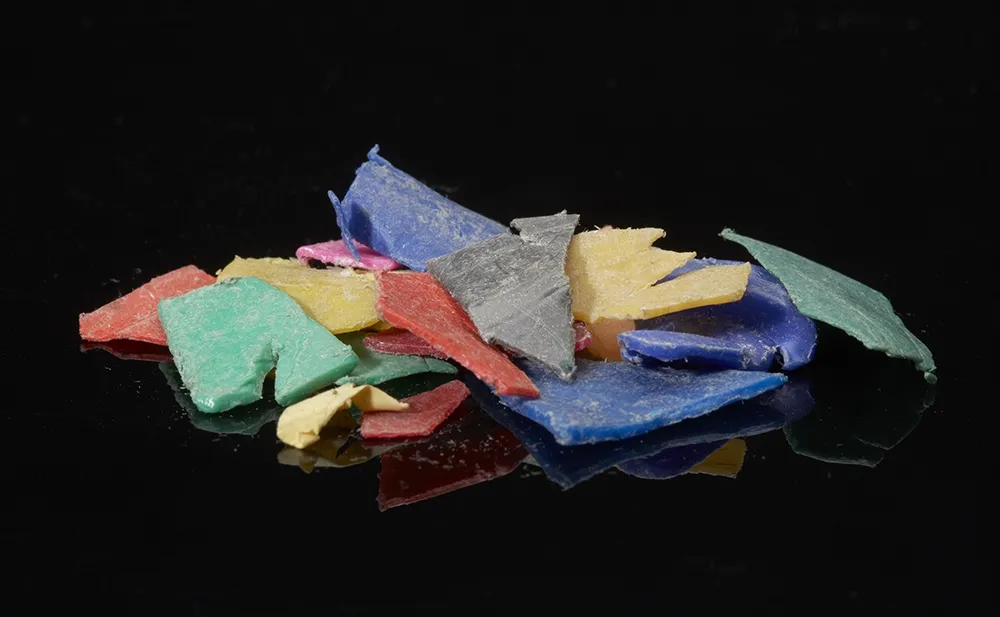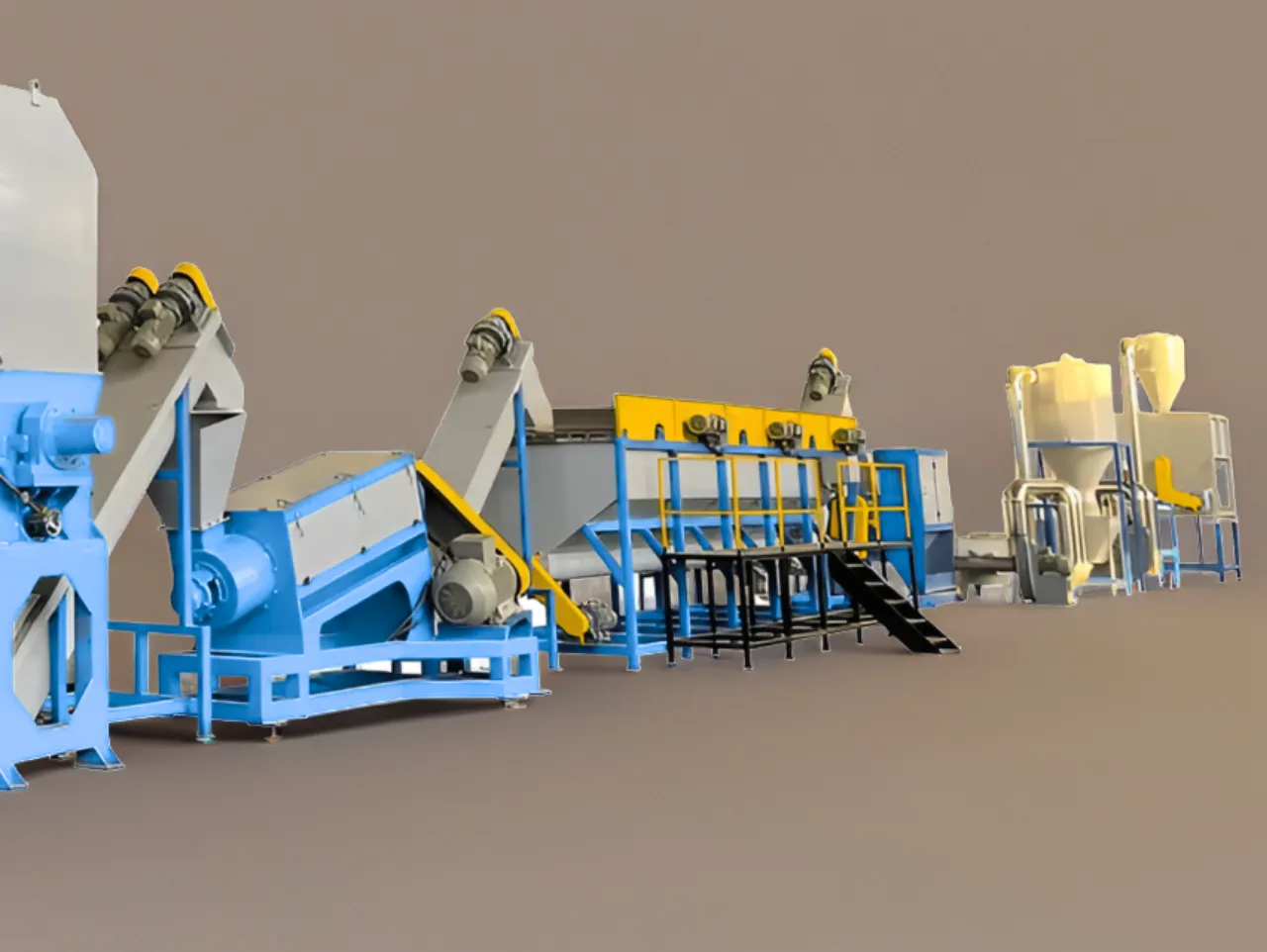Strojevi za recikliranje krute plastike ključne su za pretvaranje otpadne plastike u vrijedne sirovine za proizvodnju, pridonoseći i održivosti okoliša i ekonomskoj učinkovitosti. U nastavku se nalazi detaljan pregled ključnih komponenti, funkcionalnosti i prednosti ovih strojeva, zajedno sa smjernicama za odabir prave opreme za vaše poslovanje.
Ključne komponente i funkcionalnost
Sustav hranjenja
- Automatski transporteri za hranjenje: Dizajniran za učinkovito rukovanje velikim količinama krute plastike, smanjujući ručni rad i optimizirajući protok.
- Sustavi za detekciju metala: Zaštitite opremu od mogućih oštećenja identificiranjem i uklanjanjem metalnih kontaminanata prije nego prouzrokuju štetu.
- Merne ćelije: Pratite ulaznu težinu kako biste optimizirali proces recikliranja i osigurali dosljedan protok materijala.
- Prilagodljive brzine dodavanja: Ovi sustavi omogućuju prilagođavanje brzine dodavanja na temelju kapaciteta obrade, povećavajući fleksibilnost operacija.
Smanjenje veličine
- Primarni Sjeckalice: Rastavite velike plastične predmete na komade kojima možete upravljati, osiguravajući učinkovito smanjenje veličine.
- Granulatori: Proizvodite ujednačene veličine čestica koje su idealne za sljedeće faze obrade.
- Dizajn komore za rezanje: Oni su projektirani da minimiziraju zaglavljivanje materijala, osiguravajući kontinuirani rad.
- Podesivi razmak oštrice: Optimizira veličinu čestica na temelju karakteristika materijala i potrebnog učinka.
Sustav pranja
- Spremnici za vruće pranje: Učinkovito uklonite naljepnice, ljepila i onečišćenja, poboljšavajući kvalitetu recikliranog materijala.
- Frikcijske podloške: Pomozite odvojiti prljavštinu i strane materijale pomoću trenja i vode, poboljšavajući proces čišćenja.
- Više faza pranja: Osigurava temeljito čišćenje kako bi se zadovoljili strogi standardi kvalitete.
- Sustavi za filtriranje vode: Omogućite ponovnu upotrebu vode, smanjujući potrošnju vode i poboljšavajući ekološki učinak.
Sušenje i odvajanje
- Centrifugalna sušilicas: Učinkovito uklonite površinsku vlagu s očišćene plastike, osiguravajući da je materijal dovoljno suh za ekstruziju.
- Sustavi klasifikacije zraka: Odvojite lakša onečišćenja, kao što su filmovi ili male čestice, poboljšavajući čistoću materijala.
- Sink-Float Spremnici: Različite plastike imaju različite gustoće, a ovaj sustav učinkovito odvaja plastiku na temelju njihove plovnosti.
- Monitori sadržaja vlage: Osigurajte da materijal zadovoljava ispravnu razinu vlage prije prelaska na sljedeću fazu.
Ekstruzija i peletiranje
- Ekstruderi: Ekstruderi s jednim ili dva puža tope očišćeni plastični materijal u homogeni oblik pogodan za daljnju obradu.
- Otvori za otplinjavanje: Oni uklanjaju hlapljive spojeve koji mogu biti prisutni u plastici tijekom procesa ekstruzije.
- Mjenjači zaslona: Filtrirajte sve preostale kontaminante, poboljšavajući kvalitetu konačnog proizvoda.
- Sustavi za peletiranje: Tehnologije podvodnog ili pramenastog peletiranja stvaraju jednolike plastične pelete koje je lako transportirati i koristiti u proizvodnji.
Prednosti izvedbe
Učinkovitost proizvodnje
- Stope obrade: Kreće se od 500 do 5000 kg/sat, ovisno o veličini i mogućnostima stroja.
- Potrošnja energije: Strojevi su dizajnirani za korištenje između 0,3 i 0,5 kWh/kg, uravnotežujući performanse i energetsku učinkovitost.
- Zahtjevi za radnu snagu: Obično su 1-2 operatera po smjeni dovoljni za upravljanje operacijama, čime se smanjuju troškovi rada.
- Brze izmjene materijala: Mnogi sustavi omogućuju brzo prebacivanje između različitih vrsta materijala ili boja, povećavajući fleksibilnost proizvodnje.
Poboljšanja kvalitete
- Dosljedna raspodjela veličine peleta: Korištenje naprednih tehnologija granulacije i peletiranja osigurava ujednačenu proizvodnju, poboljšavajući kvalitetu recikliranog materijala.
- Niske razine kontaminacije: Napredni sustavi pranja i filtracije osiguravaju da se razine kontaminacije drže ispod 50 dijelova na milijun (ppm).
- Minimalna toplinska degradacija: Učinkoviti procesi ekstruzije minimiziraju degradaciju plastike, održavajući njihovu kvalitetu.
- Izlaz visoke nasipne gustoće: Konačni proizvod ima visoku nasipnu gustoću, što ga čini lakšim i isplativijim za transport i skladištenje.
Ekonomske prednosti
- Smanjeni troškovi originalnog materijala: Recikliranje krute plastike smanjuje potrebu za novim sirovinama, smanjujući troškove proizvodnje.
- Manji troškovi odlaganja otpada: Pretvaranjem otpada u materijal koji se može ponovno koristiti, poduzeća mogu značajno smanjiti troškove zbrinjavanja otpada.
- Brzi povrat ulaganja: Poduzeća mogu očekivati povrat ulaganja u roku od 12 do 24 mjeseca, ovisno o opsegu poslovanja.
- Povećana materijalna vrijednost: Prerada otpadne plastike u pelete povećava vrijednost materijala, stvarajući nove izvore prihoda.
Utjecaj na okoliš
- Smanjeni otpad na odlagalištima: Recikliranje krute plastike pomaže u preusmjeravanju velikih količina plastičnog otpada s odlagališta.
- Niži ugljični otisak: Proizvodnja proizvoda od reciklirane plastike zahtijeva manje energije od proizvodnje od izvornih materijala, što rezultira manjim emisijama ugljika.
- Recikliranje vode: Integrirani sustavi za filtriranje vode pomažu smanjiti potrošnju vode i smanjiti utjecaj na okoliš.
- Energetski učinkovita obrada: Mnogi su strojevi dizajnirani da minimiziraju potrošnju energije uz održavanje visoke propusnosti.
Napredne značajke
Automatizacija i upravljanje
- Kontrolni sustavi temeljeni na PLC-u: Nudi preciznu kontrolu cijelog procesa recikliranja, osiguravajući optimalnu izvedbu.
- Praćenje proizvodnje u stvarnom vremenu: Omogućuje operaterima da prate i prilagođavaju proces u stvarnom vremenu, poboljšavajući učinkovitost i kvalitetu izlaza.
- Mogućnosti daljinskog rada: Neki sustavi omogućuju daljinski nadzor i kontrolu, povećavajući fleksibilnost i smanjujući potrebu za osobljem na licu mjesta.
- Automatizirana kontrola kvalitete: Osigurava dosljednu kvalitetu konačnog proizvoda, smanjujući ljudske pogreške i povećavajući pouzdanost proizvodnje.
Sigurnosni sustavi
- Funkcije zaustavljanja u nuždi: Štiti radnike dopuštajući brzo isključivanje u slučaju nužde.
- Sigurnosne blokade: Sprječava pristup opasnim područjima dok stroj radi, štiteći osoblje.
- Sustavi za sakupljanje prašine: Održavajte kvalitetu zraka hvatanjem sitnih čestica tijekom procesa recikliranja.
- Značajke smanjenja buke: Minimizira radnu buku, poboljšava radnu okolinu i ispunjava standarde za regulaciju buke.
Značajke održavanja
- Lako pristupne točke održavanja: Osigurajte da se zadaci rutinskog održavanja mogu obaviti brzo i učinkovito.
- Alati za rezanje s brzom izmjenom: Omogućuje bržu zamjenu oštrica, smanjujući vrijeme zastoja.
- Upozorenja o preventivnom održavanju: Automatska upozorenja obavještavaju operatere o potencijalnim potrebama održavanja prije nego što uzrokuju probleme.
- Komponente otporne na habanje: Dijelovi izrađeni od visokokvalitetnih materijala produljuju životni vijek stroja i smanjuju dugoročne troškove održavanja.
Područja primjene
Industrijski sektori
- Recikliranje automobilskih dijelova: Obradite krutu plastiku koja se koristi u proizvodnji automobila, smanjujući otpad i oporavljajući vrijedne materijale.
- Obrada elektroničkog otpada: Reciklirajte plastiku iz elektroničkih uređaja, pridonoseći smanjenju e-otpada.
- Industrijsko pakiranje: Obradite materijale za pakiranje za ponovnu upotrebu, podupirući održivost u industriji pakiranja.
- Oporaba građevinskog otpada: Reciklirajte plastiku iz građevinskog otpada, promičući ponovnu upotrebu materijala u građevinskom sektoru.
Vrste materijala
- Polietilen visoke gustoće (HDPE): Plastika koja se široko koristi u pakiranju i kućanskim predmetima.
- Polipropilen (PP): Obično se nalazi u automobilskoj industriji i pakiranju.
- Polietilen tereftalat (PET): Uobičajeno u bocama i spremnicima.
- Akrilonitril butadien stiren (ABS): Koristi se u automobilskim dijelovima i potrošačkoj elektronici.
Odabir pravog stroja za recikliranje čvrste plastike
Prilikom odabira stroja za recikliranje, razmotrite sljedeće čimbenike:
- Zahtjevi za kapacitet: Procijenite trenutne i buduće potrebe kako biste bili sigurni da se stroj može prilagoditi vašim operacijama.
- Specifikacije materijala: Provjerite je li stroj kompatibilan s vrstama krute plastike koju obrađujete, kao što su HDPE, PP, PET ili ABS.
- Energetska učinkovitost: Odaberite strojeve koji smanjuju potrošnju energije kako biste smanjili operativne troškove.
- Trajnost i održavanje: Odlučite se za strojeve izrađene od robusnih materijala i sa značajkama koje olakšavaju jednostavno održavanje.
- Automatizacija: Strojevi s automatiziranim procesima i nadzorom u stvarnom vremenu povećat će produktivnost i smanjiti troškove rada.

Strojevi za recikliranje čvrste plastike ključna su ulaganja za tvrtke koje su predane održivosti. Nudeći visoku učinkovitost, mali utjecaj na okoliš i poboljšane proizvodne mogućnosti, tvrtkama omogućuju recikliranje otpada u materijale visoke vrijednosti, pridonoseći čišćoj i održivijoj budućnosti.



